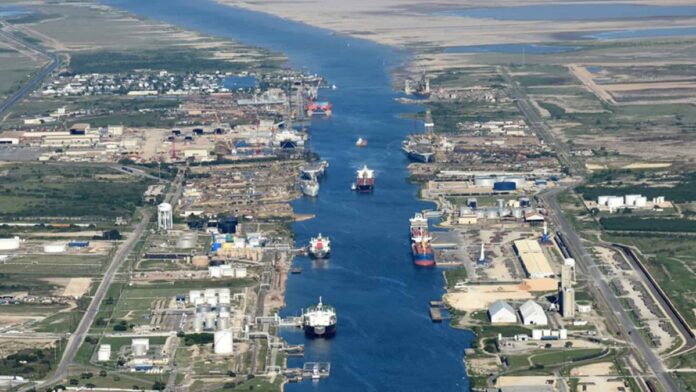The head of Annova LNG, one of three liquefied natural gas companies recently granted permission by the Federal Energy Regulatory Commission to construct LNG export terminals at the Port of Brownsville, told the Houston Chronicle in September that the company would hold off on a “final investment decision” to proceed with the project until it had sold two-thirds of its proposed production.
That’s 4 million out of 6 million metric tons per year (mtpa) of proposed LNG production. According to Annova’s own schedule, an FID and “full notice to proceed” won’t come before Dec. 31, 2020. FERC announced approval for the project on Nov. 21. Annova’s schedule forecasts construction of the facility will begin around the end of 2020 and be complete in fall 2025.
Annova, majority owned by Exelon Corp. of Chicago, said the plant would support an average of 700 on-site jobs over a four-year construction period and, once operational, would employ roughly 165 permanent fulltime workers to run and manage the facility.
NextDecade Corp.’s Rio Grande LNG project, which also received FERC approval this month, said it expects to finalize “important commercial milestones,” including the completion of commercial contracts for a portion of production, during the fourth quarter of 2019 and first quarter of 2020, and also anticipates a FID in the first quarter of next year.
“Construction of the facility is expected to commence shortly after FID, with commercial operations slated for late 2023,” according to the company.
Rio Grande LNG is the largest of the proposed projects, with a capacity of 27 mtpa when fully built out. FERC also approved a related project, NextDecade’s 137-mile Rio Bravo Pipeline, which is actually two 42-inch pipelines to transport natural gas to the terminal from the Agua Dulce hub in Nueces County, the gas originating from the Permian Basin and Eagle Ford Shale.
Situated on nearly 1,000 acres on the Brownsville Ship Channel, Rio Grande LNG is the largest of the proposed projects. The company said the facility would support thousands of direct and indirect jobs during construction and regular operations.
The smallest of the three proposed terminals is Texas LNG, which would produce a maximum of 4 mtpa when fully built out. The company said the relatively small size of the facility “fills an important need from global LNG customers seeking smaller contract volumes in order to diversity their gas supply portfolio.”
The company said it plans to get to a FID next year, contingent on a number of factors including commercial agreements, financing and incentives, and expects to make its first LNG exports in 2024.
All three LNG companies called the FERC decisions a major milestone toward development of the projects, which environmental groups have long opposed. On Nov. 21, the day of the FERC announcement, the Sierra Club vowed to keep up the resistance, noting that all three projects still require approval from the U.S. Army Corps of Engineers; Annova and Texas LNG still lack state air pollution permits; and Texas LNG is still awaiting a “biological opinion” from the U.S. Fish and Wildlife Service.
Rebekah Hinojosa, Sierra Club Brownsville organizer, said a number of local communities have expressed opposition to the plants.
“It’s disappointing that FERC failed to recognize that these proposed fracked gas facilities would be a disaster for the Rio Grande Valley, but today’s approval is far from the end of the fight,” she said. “Our communities are united in opposition to these dirty, dangerous projects, and we will continue to pursue all avenues — from the courts to pressuring financial institutions — to ensure they are never built.”




